Finding the Best Separation for Enantiomeric Mixtures
LCGC North America
The authors describe a study of screening procedures that demonstrated a relatively small set of columns can be used routinely.
The separation of enantiomers by chromatography is a well-established technique in chemical and pharmaceutical research. There are currently a very large number of columns commercially available and, to meet time constraints, an efficient screening strategy for the selection of conditions with a high success rate is required. A study of screening procedures has been performed which demonstrated that a relatively small set of polysaccharide-derived columns can be used on a routine basis in different chromatographic modes to meet modern analytical needs.
The tools for analytical resolution of enantiomers have evolved in recent years with advances in chromatographic techniques. As in any analytical method, the separation of enantiomeric pairs should achieve a rapid and complete resolution of the two chromatographic peaks and must also be reproducible and robust. Ideally it should also separate sample impurities, reach a low LOD/LOQ (limit of detection/limit of quantification) and show an appropriate elution order. Moreover, the ideal chromatographic conditions should ensure the stability of the sample during the analysis in addition to the compatibility of the sample medium with the mobile phase and the column.
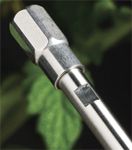
Such a list of conditions for the resolution of challenging samples requires decisions concerning both the chiral stationary phases and the chromatographic modes employed. Our goal to find the best chromatographic method must be tempered with the use of a minimum number of chiral stationary phases (CSPs), thus, an efficient screening strategy is essential.
The resolution of racemic mixtures by chromatography has reached maturity in the last decade (1,2). Although most racemates and diastereomeric mixtures can be separated at analytical level, the challenge is to achieve complete resolution of the components while reaching high-speed, preserving efficiency and with limited screening efforts.

KEY POINTS
Resolution of enantiomers by chromatography is predominantly performed by using chiral stationary phases. A number of chiral selectors are available commercially at present, such as proteins, polysaccharides, antibiotics, brush-type molecules, ionic exchangers, crown ethers, cyclodextrins and multiple polymers (1,2). One of the most widely used groups of CSPs is the group consisting of silica-based polysaccharide-derived chiral supports. They can operate in different modes and, therefore, a preliminary decision tree to devise the screening strategy is substantial when a new sample is received (see Figure 1).
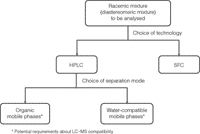
Figure 1: Decision tree in method development in the resolution of enantiomers by chromatography.
The starting point is to decide which technology is to be used with a specific type of selector. Both liquid chromatography (LC) and supercritical fluid chromatography (SFC) are powerful tools that have been used successfully. The decision, therefore, is typically based upon equipment availability and suitability for the scale and type of molecule. Although SFC lacked sensitivity in its early development, recent advances have resulted in the efficient use of SFC with mass spectrometry (MS) detectors.
In LC method development, one may use organic solvent mixtures or water-compatible mobile phases. Normal-phase applications have historically been more widely used for the separation of enantiomers. However, the reversed-phase separations, together with polar organic modes, should be seriously considered when samples are in aqueous media to exploit the LC–MS compatibility of these mobile phase systems.
The present article aims to cover the practical approaches applied in our laboratories to screen analytical samples. Based upon extensive experimental work, we will focus on the results achieved with a range of 3- and 5-μm silica-based phases, containing amylose and cellulose derivatives as chiral selectors in a coated or immobilized fashion. Strategies for efficient HPLC method development with these CSPs in normal phase, polar mode and reversed phase conditions, as well as SFC, will be addressed. The different modes will be reviewed with the preferred primary screening, as well as the potential alternatives for higher peak efficiency (switch to smaller particles), fast analysis and unique selectivities with new selectors.
Experimental
The Chiralpak and Chiralcel analytical columns (Daicel Chemical Industries Ltd, Tokyo, Japan) were used in this study. The 5-μm columns were 150 mm × 4.6 mm for reversed-phase separations and 250 mm × 4.6 mm for normal-phase and polar eluents. The analytical columns based upon 3-μm silica gels were in 150 mm × 4.6 mm and 50 mm × 4.6 mm formats.
The mobile phases for LC were prepared from HPLC grade solvents. Diethylamine (DEA), trifluoroacetic acid (TFA), formic acid (HCOOH) and ammonium bicarbonate were used as the mobile phase additives for the resolution of nonneutral molecules.
The chromatographic tests were performed on two separate LC systems. One was used for columns packed with 3-μm CSPs. This system consisted of the following modules: Agilent 1100 Series QuatPump (Agilent Technologies, Massy, France) with vacuum degasser, Agilent 1100 Series well plate autosampler, Agilent 1200 Series thermostated column compartment, Agilent 1100 Series diode array detector B with a high-pressure micro flow cell (1.7 μL), and 0.12-mm i.d. flow capillaries.
The second system was used primarily for parallel testing of the 5-μm packed columns. Its configuration was similar to the first one except for the following modules: Jet Stream column oven (VWR, France), Agilent 1100 Series diode array detector B with its standard flow cell (16 μL) and the original 0.17-mm i.d. flow capillaries.
Method Development in Organic Mobile Phases
Given the increasing number of chiral compounds in drug development and other domains, efficient and automated HPLC screening using columns packed with various CSPs has been a challenging subject and discussed by several authors (3–7). The strategies to achieve enantiomer separations are quite variable from one laboratory to another depending on the type of substances in screening, the equipment available and the R&D background. However, the motivation for the development of screening approaches remains common. We all search for the easiest, most reliable way to analyze a series of molecules with diverse structures and chemical properties in a reasonable time frame. This is the standpoint for chiral compound screening.
The standard screening protocols adopted by companies and research groups worldwide use either three or four analytical columns in the primary screen. Two main options, already discussed in a series of publications (8–10), include the three immobilized phases of the newest generation (Chiralpak IA, IB and IC, Chiral Technologies, West Chester, Pennsylvania) or alternatively, the four traditional coated columns (Chiralpak AD-H and AS-H, Chiralcel OD-H and OJ-H). Such configurations with polysaccharide-derived columns, tested on a randomly composed sample pool and with four solvent mixtures, could afford complete enantiomer resolution for over 90% of the racemates examined and enantiorecognition above 95%.
After further investigation it was concluded that the small group of solvents and their mixtures could lead to good selectivity values for most of the compounds tested and could be considered as a primary set of mobile phases for screening with these CSPs. The primary solvent configuration for both screening systems is presented in Figure 2. In practice, these four-component mobile phase sets are normally set up using a quaternary HPLC screening system.
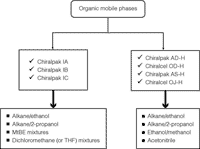
Figure 2: Primary screening systems with polysaccharide-derived columns in organic solvents.
It is well known that the nature of the mobile phase has major effects on the enantioselective performance of a CSP. The proposed screening systems were selected to maximize the complementary behavior among the CSPs of the set and also between solvents on the same column. It is important to note that the elution order changes in certain cases due to the different selectors or mobile phases. This phenomenon can often be observed not only for the elution order, but also for the separation of certain sample impurities. Such systematic screening can be a tool to choose the most suitable CSP/solvent combination for the researcher's specific aims.
Method Development Under Reverse-Phase Conditions
The polysaccharide-type CSPs seem to be most frequently used with organic eluents (alkane mixtures or the polar solvents discussed above). However resolution of enantiomers on the polysaccharide columns by aqueous eluents has a history almost as long as their applications with organic mobile phases (11). The choice of reversed-phase mode has often been related to the need for direct injection of the samples of biological extracts, but also due to low retentivity of the compounds under normal-phase conditions, low solubility of polar and ionic samples in organic solvents and lack of appropriate enantioselectivity in organic mobile phases. An additional and increasingly important reason to prefer reversed-phase methods is their suitability for LC–MS applications.
Method development in reversed-phase mode on polysaccharide-derived CSPs has been discussed in several articles (11,12) and some new applications have been recently developed (13,14). Nevertheless, only coated supports were considered in most of these reports and LC–MS compatibility was only covered partially, if at all.
As a logical sequence of the recent investigations with organic solvents in HPLC and SFC (9,10), an intensive study on the chromatographic behavior of the immobilized CSPs toward various reversed-phase mobile phase systems was undertaken in our laboratories. This has allowed the development of simple and straightforward strategies for efficient method development (15).
The mobile phase selection should take into account the nature of the molecules to be analyzed. Under this primary guideline, a "decision tree" can be defined to start the method development (Figure 3). The selected mobile phases do not really differ from the proposals for achiral reversed-phase screening.

Figure 3: Decision tree to start method development in reversed-phase mode on polysaccharide-derived columns.
The organic modifier plays an important role in regulating retention and modulating enantioselectivity. The first choices of modifiers to be combined with water are acetonitrile and methanol, as in achiral reversed-phase LC. In the case of the immobilized supports, other solvents, such as tetrahydrofuran, can be used. For complex separations it may be profitable to investigate the use of these other solvents with the immobilized columns in combination with acetonitrile- and methanol-containing mobile phases to modulate recognition.
As for the aqueous solution, the most common and effective pH value for the resolution of acidic molecules is in the range 2.0–2.5 in which the ionization of most organic acids will be suppressed. Formic acid is a good choice where LC–MS compatibility is required, while other acids (TFA, acetic acid, H3PO4) can be used for other applications.
Based upon the same reasoning, basic aqueous solutions should normally be in use to suppress the ionization of basic solutes. Where reversed-phase methods suitable for MS detection for basic compounds are being developed, the ammonium bicarbonate solution adjusted to pH 9 is an excellent option, although some other buffers may also be useful in terms of enantiorecognition.
Method Development Under SFC Conditions
SFC applications in the separation of enantiomers are a growing field and deserve a dedicated article for themselves. Experiments with polysaccharide-derived CSPs show that excellent success rates can be achieved by using alcohol co-solvents (16–18). In particular, ethanol, methanol and isopropanol are very good initial co-solvent choices. Acetonitrile seems to be less successful, but it may be an option for a secondary screening.
Immobilized CSPs are compatible with a much wider range of solvents than the coated phases. The use of such 'extended range' solvents was investigated for SFC screening in the same way as LC separations. Initially these solvents were used to enhance the sample solubility, to solve difficult separations or to process the compounds that are unstable in alcohols. Subsequently, we have found that these solvents can also offer exceptional enantioselectivity profiles. THF, methyl-tert-butyl ether (MtBE), dichloromethane (DCM) or ethyl acetate, for example, can be used as the CO2 modifier. In some cases, pure DCM, MtBE and ethyl acetate may not be strong enough to elute certain compounds. In these cases, the addition of small percentages of an alcohol mixed with the cosolvent is advised.
As already mentioned, the success rate is already very high with the alcohol modifiers. Therefore, it has become established practice to use either the three immobilized columns (Chiralpak IA, IB and IC) — or alternatively the four coated ones (Chiralpak AD-H and AS-H, Chiralcel OD-H and OJ-H) — in the column set for screening with the alcohol modifiers as first strategy. Then the solvent range can be broadened on the immobilized columns if no satisfactory separation is achieved or if sample solubility or stability becomes an issue.
SFC and LC are complementary techniques and comparable success rates are achieved with the same columns. Nevertheless, recognition patterns can be different and lead to different retentive and selectivity profiles. These two factors plus possible sample solubility issues will determine the choice of one technique or the other for separation of a given compound.
CSPs Based Upon 3-μm Silica
The use of polysaccharide-based CSPs of 3-μm particle size, in combination with the screening strategies outlined above, allows high-speed development of methods for the rapid and highly efficient separation of enantiomers (19).
Newly developed 3-μm supports show certain advantages for analytical purposes. Their performance and potential in fast routine chiral analysis, compared with the already existing 5-μm supports, are based upon their higher column efficiency and more favorable mass transfer kinetics. These benefits on enantiomer resolution associated to the small particles are important for difficult separations and on gain of analysis time.
Short, 4.6-mm i.d. columns packed with these 3-μm CSPs afford rapid and high-efficiency resolution of enantiomers when used in conventional modern HPLC instruments. Very high-speed analysis is possible by optimization of flow rate and temperature. Some examples of such fast analyses at high flow rate are depicted in Figure 4, with proven column packing stability over the whole HPLC pressure range.

Figure 4: Fast analysis within 30 s on 3-μm columns. Common conditions: temperature: 25 °C, column size: 50 mm à 4.6 mm.
New Chiral Selectors
Although most separations can be achieved with a reduced number of columns and solvents, there remains a need for unique selectivities, which allow the resolution of certain challenging isomers or their impurities. Our research effort over the last decade has been devoted to the development and selection of a reduced series of selectors showing enantiomeric recognition complementary to the primary column sets used for screening. The new CSPs exhibiting the outstanding complementary characteristics are cellulose and amylose derivatives bearing methyl- and chloro-substituted phenyl groups, instead of the dimethyl- or dichloro- present in the standard systems (see Figure 5 for structural features). These columns were initially developed and used in our labs solely for preparative purposes but following their successful use for nearly a decade, they were introduced in 3- and 5-μm formats for LC and SFC separations. As shown in Figure 6, their compound-specific recognition can be helpful to resolve samples with multiple components, such as the two metolachlor enantiomeric pairs, in a single run.

Figure 5: Structural features of chloromethyl-substituted selectors.
Conclusion
The current portfolio of columns available for the separation of enantiomers offers a powerful technology platform for the resolution of most enantiomers at analytical level. The selection of a limited series of CSPs, together with the rational choice of mobile phases and technologies, leads to new screening strategies that are compatible with time constraints and with the need for high success rates.
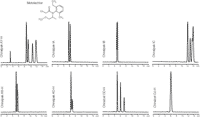
Figure 6: Compound-specific selectivity on different 5-μm columns. Conditions: 95:5 n-hexaneâethanol, 25 °C, 1 mL/min, 250 mm à 4.6 mm.
It is our conclusion that an adequate compromise between resolution needs and development time can be found with an optimal screening setting. However, the current status is expected to evolve to address new challenges in the resolution of specific samples. This will result in the development of novel phases and technologies and we will have, in turn, to evolve new screening strategies to match these new needs.
Pilar Franco received her PhD degree in Pharmacy from the University of Barcelona (Spain). After two years postdoctoral work in the University of Vienna (Austria) under the supervision of Professor Wolfgang Lindner, she joined Chiral Technologies Europe (Strasbourg, France). She is now manager of technical operations in the same company. Her main interests include the applications of chiral selectors for the resolution of enantiomers at analytical and preparative scale.
Tong Zhang received her PhD degree in Organic Chemistry from the University of Bordeaux I (Bordeaux, France) in 1992. After three years postdoctoral work at Ciba Geigy (Basel, Switzerland) under the supervision of Dr Eric Francotte, she joined Chiral Technologies Europe (Strasbourg, France). She is now the R&D manager in the same company. Her main interests include development and applications of chiral stationary phases for resolution of stereoisomers by chromatography.
References
(1) G. Subramanian (Ed.), Chiral Separation Techniques: A Practical Approach, 3rd revised and updated edition (VCH, Weinheim, 2007).
(2) N.M. Maier, P. Franco and W. Lindner, J. Chromatogr., A 906, 3–33 (2001).
(3) M.L. de la Puente et al., J. Chromatogr., A 983, 101–114 (2003).
(4) M.E. Andersson et al., J. Chromatogr., A 1005, 83–101 (2003).
(5) M.L. de la Puente, J. Chromatogr., A 1055, 55–62 (2004).
(6) N. Matthijs, M. Maftouh and Y.V. Heyden, J. Chromatogr., A 1111, 48–61, (2006).
(7) H.A. Wetli and E. Francotte, J. Sep. Sci. 30, 1255–1261 (2007) .
(8) T. Zhang and P. Franco in G. Subramanian (Ed.), Chiral Separation Techniques: A Practical Approach (3rd revised and updated Edition), VCH, Weinheim (2007) Chapter 3.
(9) P. Franco and T. Zhang, J. Chromatogr., B 875, 48–56 (2008).
(10) T. Zhang, D. Nguyen and P. Franco, J. Chromatogr., A 1191, 214–222 (2008).
(11) K. Tachibana and A. Ohnishi, J. Chromatogr., A 906, 127–154 (2001).
(12) T. Huybrechts et al., LCGC Eur. 20(6), 320–335 (2007).
(13) R. Cirilli et al., J. Chromatogr., A 1101, 198–203 (2006). .
(14) R. Ferretti et al., J. Chromatogr., A 1216, 5385–5390 (2009).
(15) T. Zhang, D. Nguyen and P. Franco, J. Chromatogr., A 1217, 1048–1055 (2010).
(16) G. Diehl et al., Presentation at SPICA 2006, Innsbruck, Austria (2006).
(17) T. Zhang, D. Nguyen and P. Franco, Presentation at the HPLC 2007, Ghent, Belgium (2007).
(18) Geoffrey Cox, Presentation at the 1st International Conference on SFC, Pittsburgh, Pennsylvania (September 2007).
(19) T. Zhang and P. Franco, LCGC Eur. 21(9), 430–437 (2008).
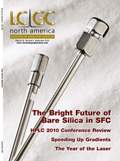
Polysorbate Quantification and Degradation Analysis via LC and Charged Aerosol Detection
April 9th 2025Scientists from ThermoFisher Scientific published a review article in the Journal of Chromatography A that provided an overview of HPLC analysis using charged aerosol detection can help with polysorbate quantification.
Removing Double-Stranded RNA Impurities Using Chromatography
April 8th 2025Researchers from Agency for Science, Technology and Research in Singapore recently published a review article exploring how chromatography can be used to remove double-stranded RNA impurities during mRNA therapeutics production.














